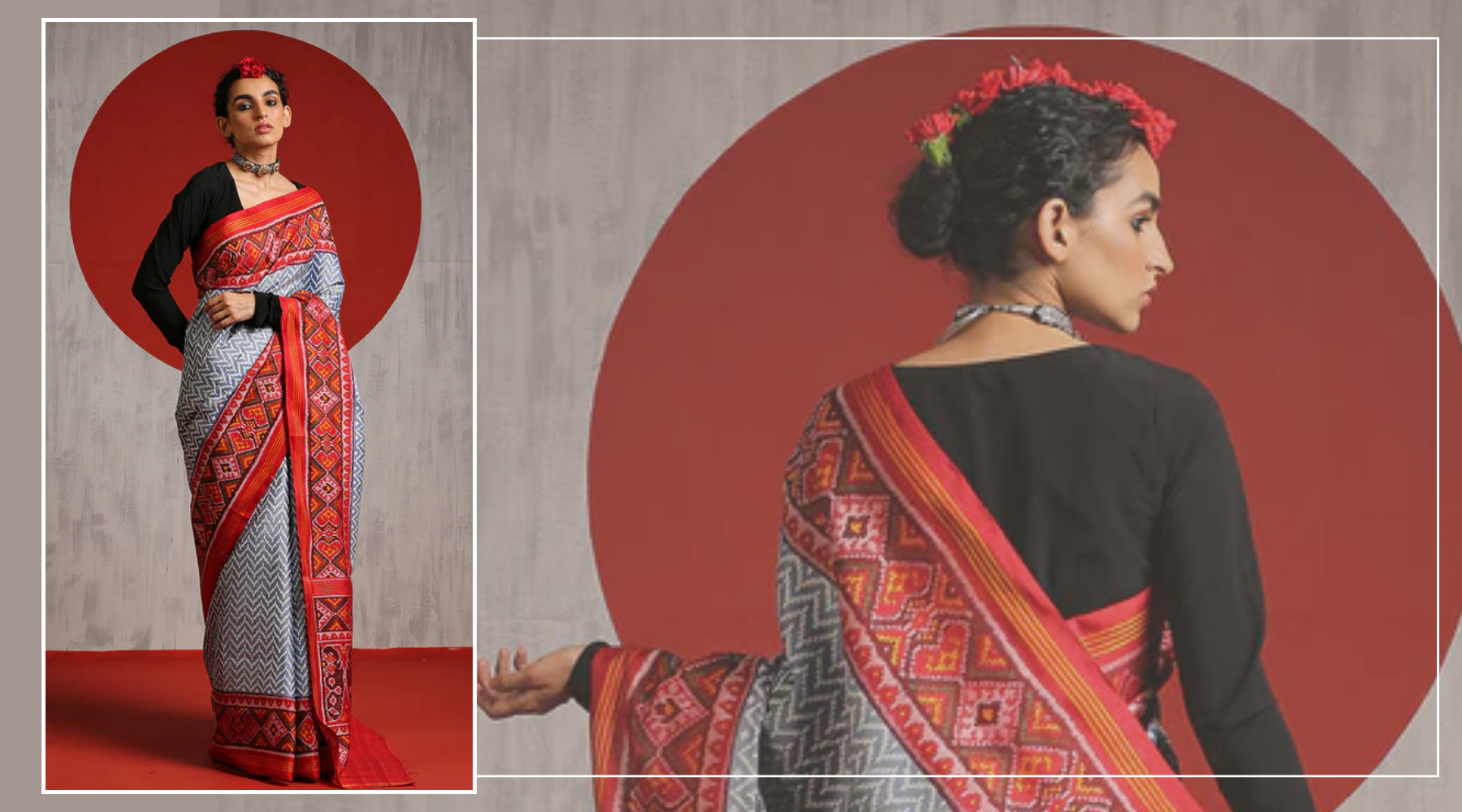India has a rich tradition of art and crafts, and the villages of Gujarat have been at the forefront of this tradition. The Ikat Patola Sarees is a prime example of the revival of the crafts of the villages of Gujarat. The resurgence of this craft has been the result of the efforts of a few passionate individuals who have been working tirelessly to revive the art and craft of this region.
The word "patola" comes from the Sanskrit word "patola," which means "to weave." The Patola Saree is made from silk and is known for its intricate designs and vibrant colors. The saree is considered a symbol of wealth and status and was traditionally worn by royalty and wealthy families.
The art of Patola weaving involves a labor-intensive process of tying and dyeing the silk threads before weaving them into the fabric. The process is done by skilled artisans who use natural dyes to create intricate designs and patterns on the fabric.
Ikat Patola Sarees are a unique creation of the Patan region of Gujarat. The word 'Ikat' comes from the Indonesian word 'mengikat,' which means to tie or bind. The art of Ikat weaving involves tying and dyeing the threads before weaving them into the fabric. Patola Sarees are a type of Ikat saree, which are made from silk and feature intricate patterns and designs.
The history of Patola Sarees dates back to the 12th century when the Solanki rulers of Gujarat patronized this art form. It was considered a symbol of wealth and prosperity and was only worn by the royal families and the affluent sections of society. However, with the advent of industrialization and the decline of the handloom industry, the art of Patola saree weaving slowly began to disappear.
The Patola Sarees was once a thriving industry in Gujarat, but the decline of the handloom industry and the rise of synthetic fabrics led to a decline in the demand for Patola Sarees. The art of Patola weaving was in danger of dying out.
However, in the 1970s, a few passionate individuals, like the Salvi family, started working towards preserving this art form. They set up a workshop to train weavers and to revive the traditional methods of dyeing and weaving. The Salvi family is one of the leading families in the Patola saree weaving industry and has played a significant role in its revival.
The process of making a Patola Saree involves several steps. The first step is to prepare the silk yarns by twisting them into a fine thread. The thread is then wound onto a large wooden frame called a "charkha."
Next, the threads are tied and dyed in a specific pattern using natural dyes such as indigo, turmeric, and pomegranate. The tying and dyeing process is known as "bandhani," and it is done by skilled artisans who use a technique called "ikat."
The ikat technique involves tying the threads in a specific pattern before dyeing them. The threads are tied tightly with a string or a rubber band to prevent the dye from penetrating the tied area. The tied threads are then immersed in a dye bath, and the dye penetrates the un-tied areas, creating a unique design. The tied threads are then carefully untied, and the threads are wound onto bobbins. The threads are then woven together on a traditional pit loom to create the fabric for the saree.
The weaving process is a slow and time-consuming process that requires skill, patience, and precision. The weavers use a technique called "double ikat," where the warp and weft threads are tied and dyed separately before being woven together. This technique creates a reversible saree with the same pattern on both sides. The finished Patola Saree is a work of art, with intricate designs and vibrant colors. Each saree is unique and takes several months to make. The saree is known for its durability and can last for several years if cared for properly.
Here are a few pieces from the WeaverStory that are a fine example of this beautiful craftsmanship -
The Patola Saree industry has faced many challenges over the years. The decline of the handloom industry, the rise of synthetic fabrics, and the lack of government support were some of the challenges faced by the industry. However, the industry has been able to overcome these challenges, thanks to the efforts of the weavers and the passion of the individuals who have worked towards preserving this art form. The revival of the Patola Saree industry has not only brought economic opportunities but has also helped to preserve the rich cultural heritage of Gujarat. The art of Patola Saree weaving is an important part of the cultural identity of the region. It is a testament to the creativity, skill, and ingenuity of the people of Gujarat. The revival of this industry has helped to showcase this art form to the world and has helped to promote the rich cultural heritage of Gujarat. The Patola Saree is now recognized as a valuable art form and has gained popularity both in India and abroad. The saree has been showcased in fashion shows and exhibitions around the world, bringing recognition and appreciation to the art of Patola weaving.
Author - Aditi Bapna









